- Home
- Upcoming #SLEEPON APP 3.0
- Upcoming #SLEEPON APP 3.0 Feature Sharing # CSV export
Upcoming #SLEEPON APP 3.0 Feature Sharing # CSV export

In the Upcoming SLEEPON app 3.0 , you can easily access raw data at the second ,minute,and day levels.
What reports could you get ?
1.Heart Rate
SLEEPON Go2sleep monitoring devices can monitor heart rate during sleep, playing a crucial role in the field of sleep health.

- Assessment of Sleep Quality: Monitoring heart rate during sleep provides valuable insights into sleep quality. Normally, heart rate varies across different sleep stages, with stable rates during deep sleep and faster, irregular rates during rapid eye movement (REM) sleep. By tracking heart rate, one can assess sleep cycles, depth, and interruptions, thereby evaluating sleep quality.
- Diagnosis of Sleep Disorders: Abnormal heart rate patterns may be associated with sleep disorders. For instance, nocturnal bradycardia or tachycardia could indicate arrhythmias, while sudden changes in heart rate may be linked to sleep apnea. Continuous heart rate monitoring helps identify these potential sleep disorders.
- Evaluation of Sleep Treatment Efficacy: For individuals with sleep disorders, monitoring heart rate allows assessment of treatment effectiveness. For example, patients with sleep apnea typically experience a reduction in nocturnal heart rate following continuous positive airway pressure (CPAP) therapy. Comparing heart rate data before and after treatment helps evaluate its efficacy.
2.Blood Oxygen
Monitoring blood oxygen levels plays a significant role in the field of sleep health. It serves not only as a crucial determinant of sleep quality and sleep disorders but also as an essential factor in assessing the effectiveness of sleep disorder treatments in later stages.

In the field of sleep health, the significance of monitoring blood oxygen levels (Blood Oxygen) is as follows:
- Monitoring Sleep Apnea: Blood oxygen levels are a crucial indicator for assessing sleep apnea syndromes such as obstructive sleep apnea. These disorders can lead to nighttime decreases in blood oxygen levels, resulting in repeated episodes of low oxygen saturation that disrupt sleep quality and impact overall health. Monitoring blood oxygen levels enables the timely identification of these issues and facilitates appropriate treatment measures.
- Assessing Sleep Quality: Blood oxygen levels also offer insights into sleep quality. While blood oxygen levels typically remain stable during the night in healthy individuals, sleep disorders or other health issues may cause fluctuations in oxygen saturation. Continuous monitoring of blood oxygen helps evaluate sleep quality and identify any potential abnormalities.
- Monitoring Treatment Efficacy: For individuals undergoing treatment, such as continuous positive airway pressure (CPAP) therapy for sleep apnea, monitoring blood oxygen levels allows assessment of treatment effectiveness. By comparing blood oxygen data before and after treatment, it can be determined whether the treatment is effective and if any adjustments to the treatment plan are necessary.
3.Sleep Stage
Monitoring sleep stages is crucial for assessing sleep quality and structure, diagnosing sleep disorders, evaluating treatment efficacy, and optimizing individual sleep management.

- Assessment of Sleep Quality: Understanding the distribution of sleep stages helps evaluate sleep quality. Typically, sleep is divided into two main stages: non-rapid eye movement (NREM) sleep and rapid eye movement (REM) sleep, each serving specific physiological functions. Monitoring the proportion and duration of these stages provides insights into sleep quality. For instance, longer REM sleep periods may correlate with better cognitive function and emotional regulation.
- Diagnosis of Sleep Disorders: Abnormal distribution or duration of sleep stages can indicate sleep disorders. For example, certain sleep disorders like insomnia or sleep apnea may lead to alterations in specific stages, such as reduced NREM or REM sleep. Monitoring sleep stages aids in diagnosing these issues and guiding appropriate treatment plans.
- Monitoring Treatment Efficacy: For individuals undergoing sleep treatment, monitoring sleep stages helps assess treatment effectiveness. Certain medications or behavioral therapies may alter the distribution of sleep stages. Monitoring these changes can determine whether the treatment is effective and guide treatment adjustments.
4.Active
In the field of sleep health, monitoring activity levels (Active) holds several significant implications:

- Assessment of Sleep Quality: Activity levels serve as one of the indicators for assessing sleep quality. Generally, individuals with lower activity levels may find it easier to enter deep sleep stages, whereas those with higher activity levels may struggle to do so. Therefore, monitoring activity levels provides information about sleep depth and quality.
- Tracking Sleep Cycles: Changes in activity levels reflect different stages of the sleep cycle. Before falling asleep, activity levels typically remain higher and gradually decrease as sleep deepens. Monitoring these changes helps determine sleep cycle stages and provides insights into sleep onset and cycle duration.
- Diagnosis of Sleep Disorders: Abnormal activity patterns may be associated with sleep disorders. For example, individuals with insomnia may exhibit high activity levels before sleep onset, while those with sleep apnea may experience sudden activity or awakenings during the night. Monitoring activity levels helps identify these abnormal patterns and raises awareness.
- Adjustment of Sleep Cycles: Based on individual activity patterns, tailored sleep cycle adjustment strategies can be developed. For instance, for individuals experiencing difficulty falling asleep or insufficient sleep, adjusting daytime activity levels or implementing relaxation techniques can help improve sleep quality.
In summary, monitoring activity levels holds significant implications in the field of sleep health. It aids in assessing sleep quality, tracking sleep cycles, diagnosing sleep disorders, and guiding sleep cycle adjustment strategies to improve individual sleep health.
5.HRV
In the field of sleep health, the significance of monitoring heart rate variability (HRV) is as follows:
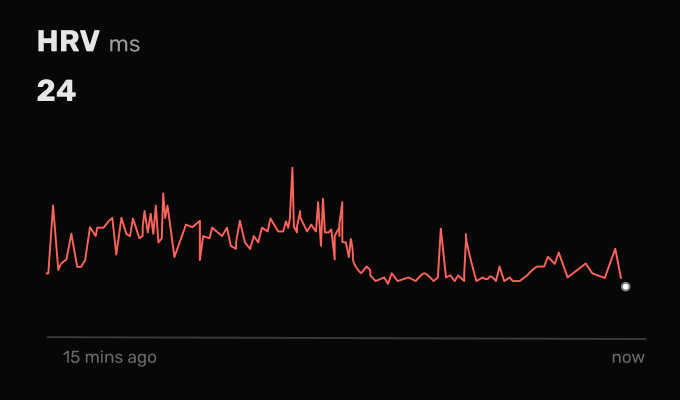
- Assessment of Autonomic Nervous System Function: During sleep, the activity level of the autonomic nervous system fluctuates with sleep stages and quality. HRV data during sleep reflects the state of the autonomic nervous system. Higher HRV is typically associated with healthier autonomic function and better sleep quality, while lower HRV may indicate autonomic dysfunction, potentially leading to decreased sleep quality, frequent awakenings, anxiety, and even association with sleep disorders such as sleep apnea. Monitoring HRV helps assess the functional status of the autonomic nervous system, indirectly reflecting sleep health.
- Diagnosis of Sleep Disorders: Abnormal HRV patterns may be associated with sleep disorders. For instance, patients with sleep apnea often exhibit changes in HRV patterns, possibly due to disturbances caused by apnea events. Monitoring HRV aids in identifying these potential sleep disorders and provides a basis for treatment planning.
- Assessment of Sleep Quality and Stability: HRV serves as one of the indicators for assessing sleep quality and stability. Higher HRV is typically correlated with better sleep quality and stability, while lower HRV may be associated with sleep disorders or poor sleep quality. Monitoring HRV helps evaluate sleep stability and quality, guiding sleep adjustment strategies.
- Monitoring Treatment Efficacy: For individuals undergoing treatment, such as those receiving treatment for sleep disorders, monitoring HRV allows assessment of treatment efficacy. Treatment may alter HRV patterns, and thus comparing HRV data before and after treatment helps determine treatment effectiveness and guides treatment adjustments.
6.Pulse Rate
Pulse rate monitoring holds significant importance in the field of sleep health. It can assess sleep quality and stability, identify sleep disorders and anxiety, monitor treatment efficacy, and promote individual health awareness and behavioral adjustments.
- Assessing sleep quality and stability: Pulse rate can reflect the frequency of heart activity, which typically varies during sleep. Continuous monitoring of pulse rate can help evaluate cardiovascular activity during sleep, indirectly assessing sleep quality and stability. Abnormal pulse rate patterns may be associated with sleep disorders or poor sleep quality.
- Identifying sleep disorders and anxiety: Abnormal pulse rate patterns may serve as indicators of sleep disorders (such as sleep apnea) or anxiety. Sustained high pulse rate or pulse rate fluctuations may indicate underlying sleep issues or psychological stress, requiring further evaluation and management.
- Monitoring treatment efficacy: For individuals undergoing sleep or cardiovascular disorder treatment, monitoring pulse rate can assess treatment efficacy. For example, patients undergoing continuous positive airway pressure (CPAP) therapy for sleep apnea may observe changes in pulse rate, reflecting treatment effectiveness and cardiovascular system adjustments.
- Enhancing health awareness and behavioral adjustments: Pulse rate monitoring can help individuals understand the relationship between sleep and health, thereby promoting changes in health behaviors. If pulse rate is abnormal, actions may be needed such as improving sleep environment, adjusting lifestyle, or seeking medical assistance.
What format would be supported to export ?
We support { PDF and CSV } export
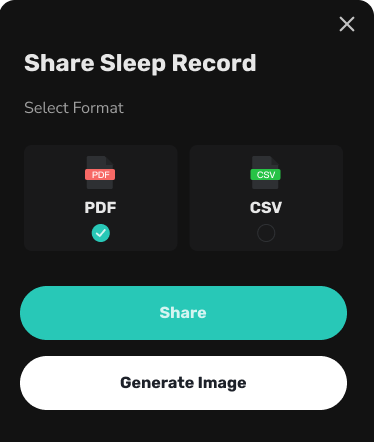
where can you download and export the report ?
Export Path 1: Sleep-Minute Detail Report-Share -csv
Export Path 2: My-Account & Security-Data Export
Could it be shared ?
Yes
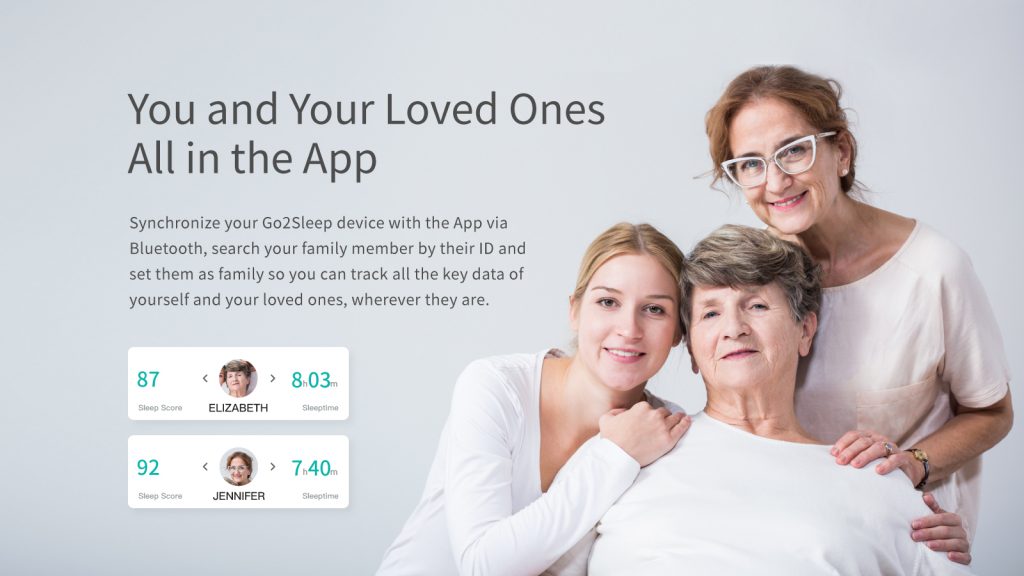
Go2sleep, an advanced sleep tracker with Heart Rate, HRV & Blood Oxygen (SpO2). You can get your clinical guidelines on sleep problems in a scientific, time- saving and effective way with it.
M2 is a quickly tailored oral appliance solution for those who are seeking to address snoring or mild OSA without medical assistance.
403A, Building A2, Zhihui Park, Fuyong Street, Bao'an District, Shenzhen, Guangdong, China
Products
Company
Copyright © SLEEPON. All rights reserved.
SLEEPON keeps both Sleeponhealth and Sleepon.us due to the brand upgrading. We promise to provide the same products and service in both sites.

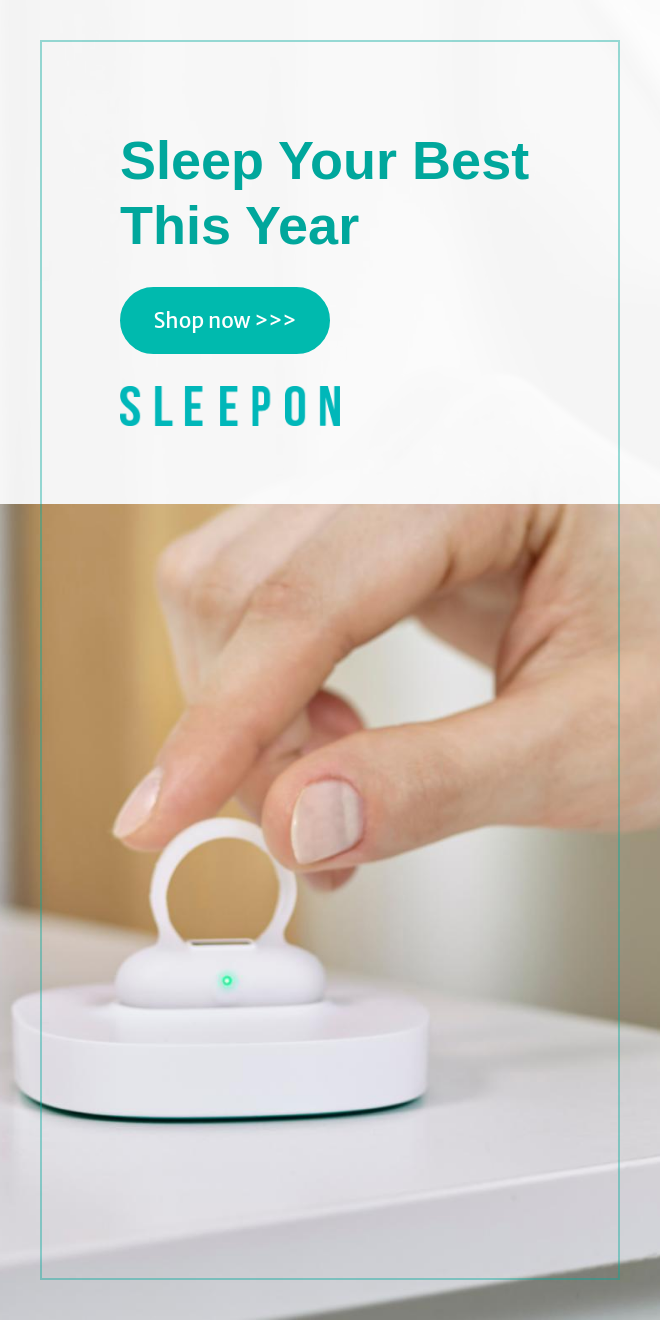
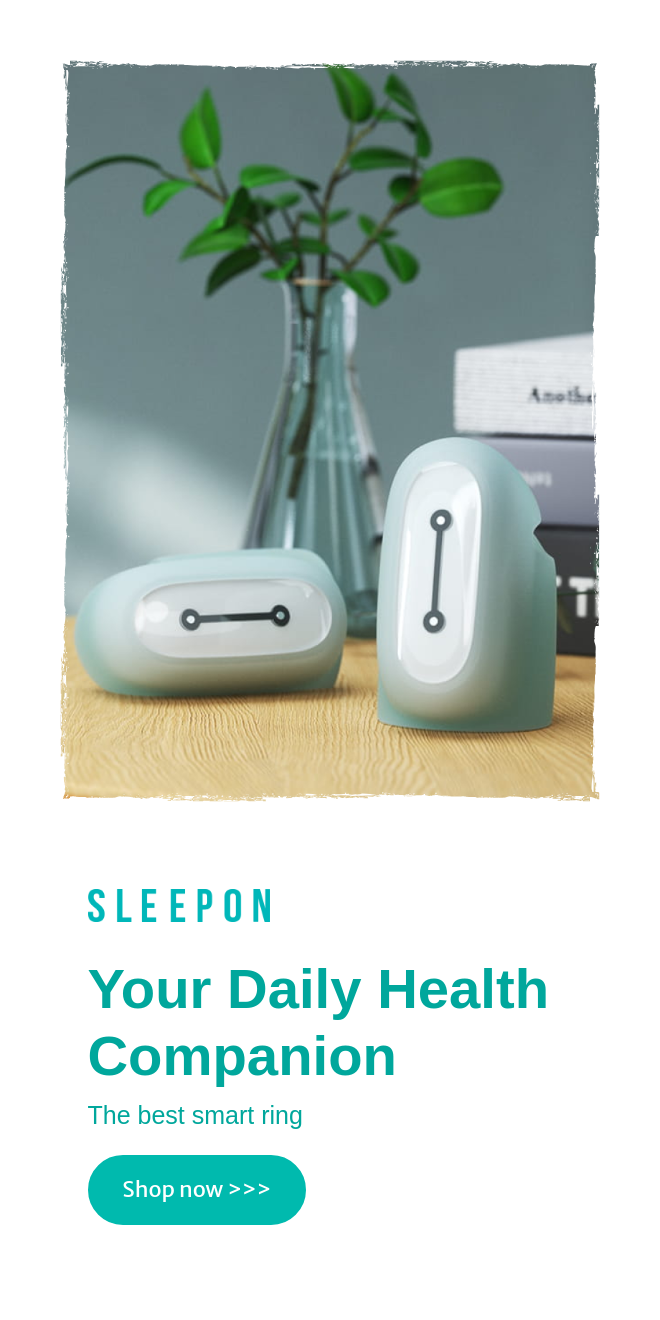


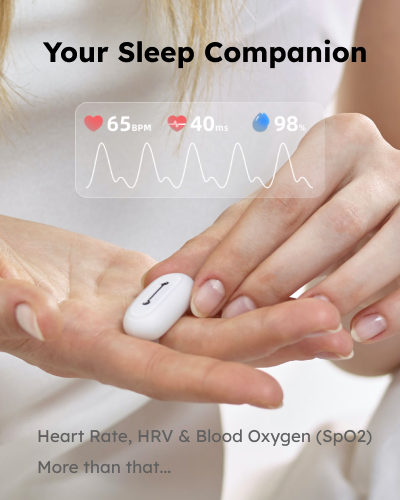





Leave a Reply